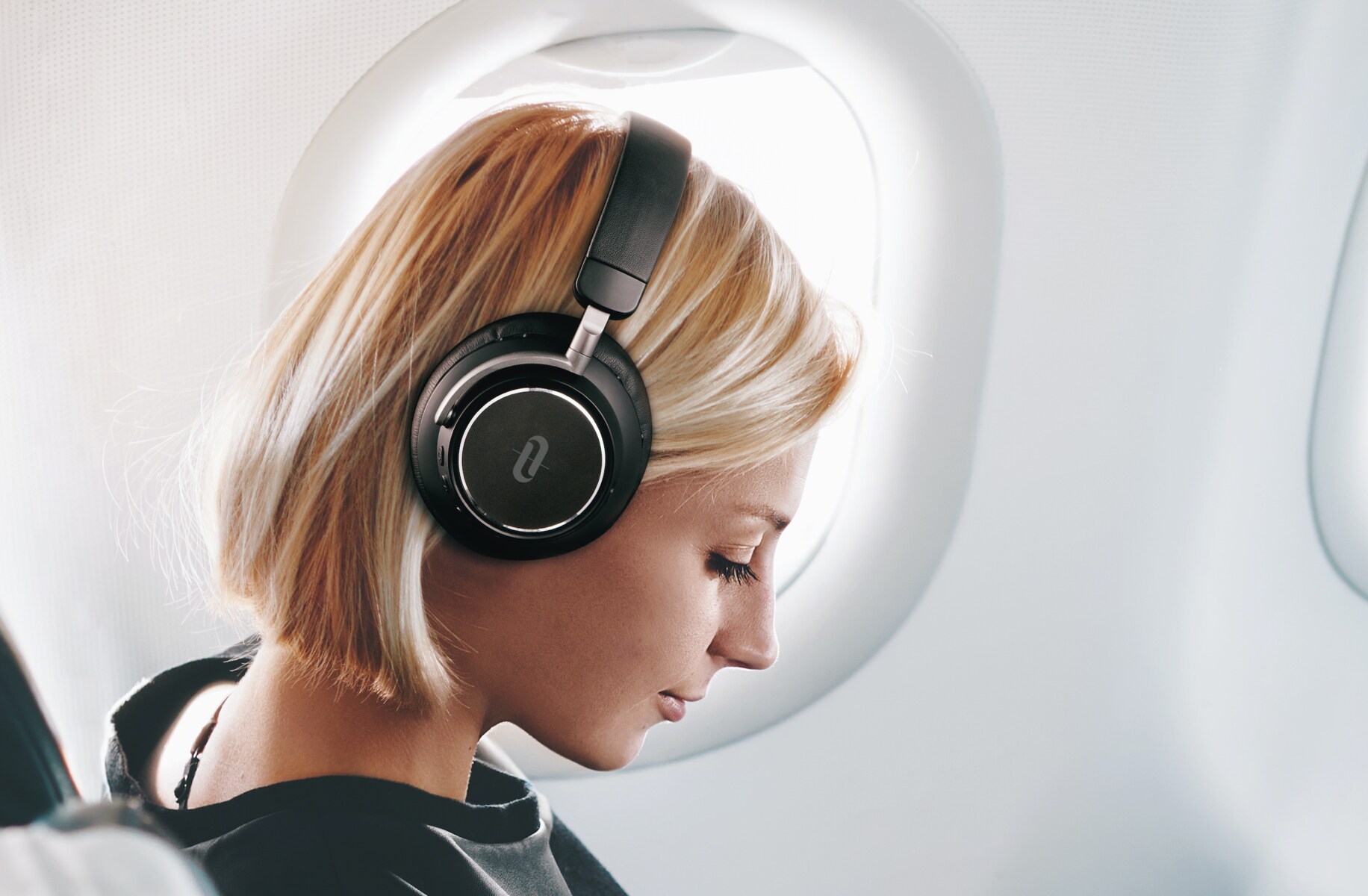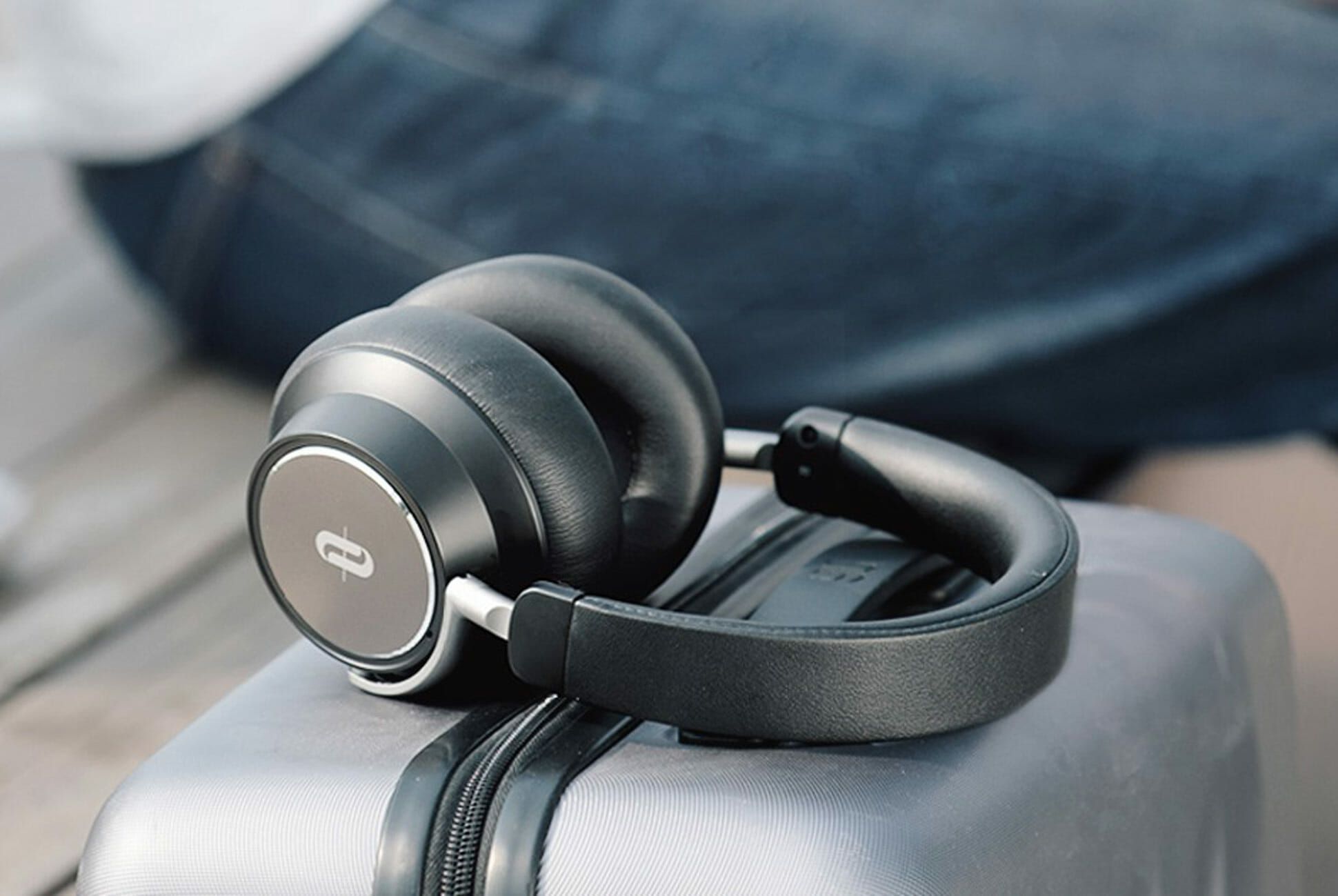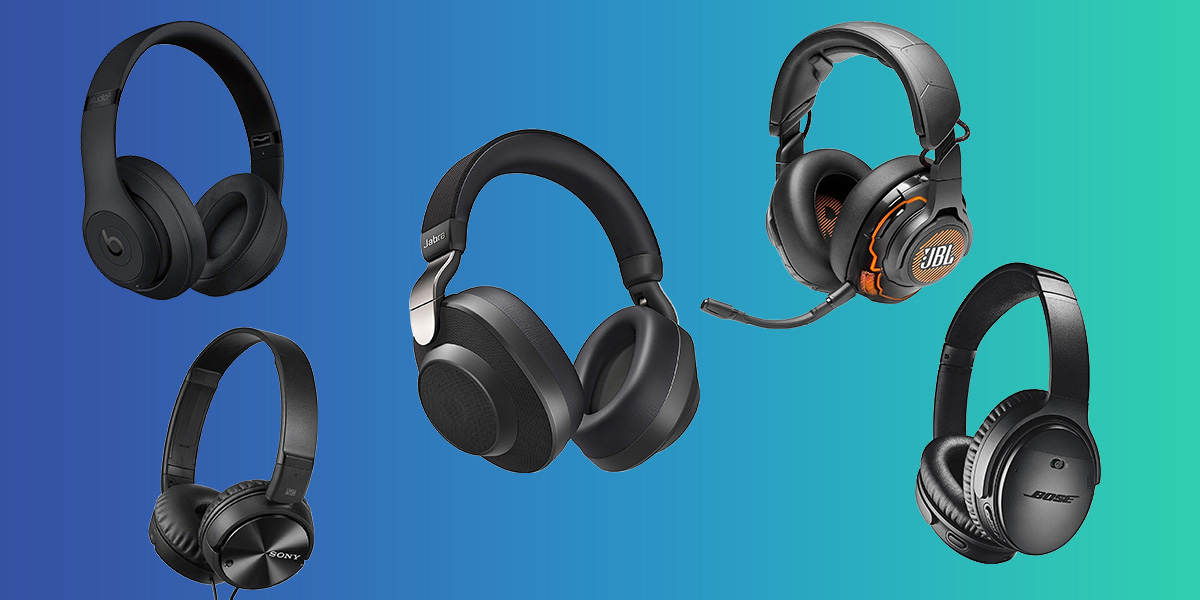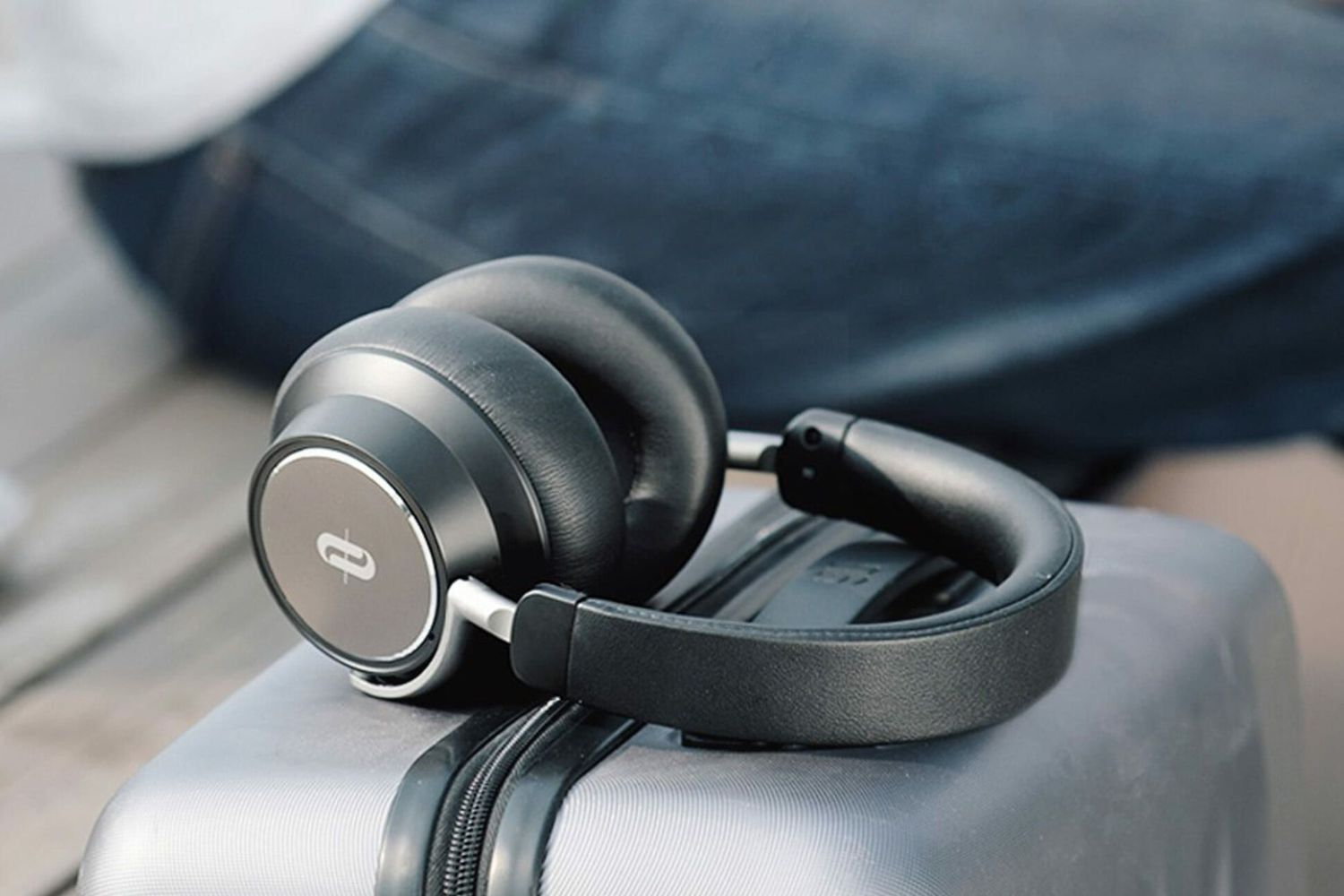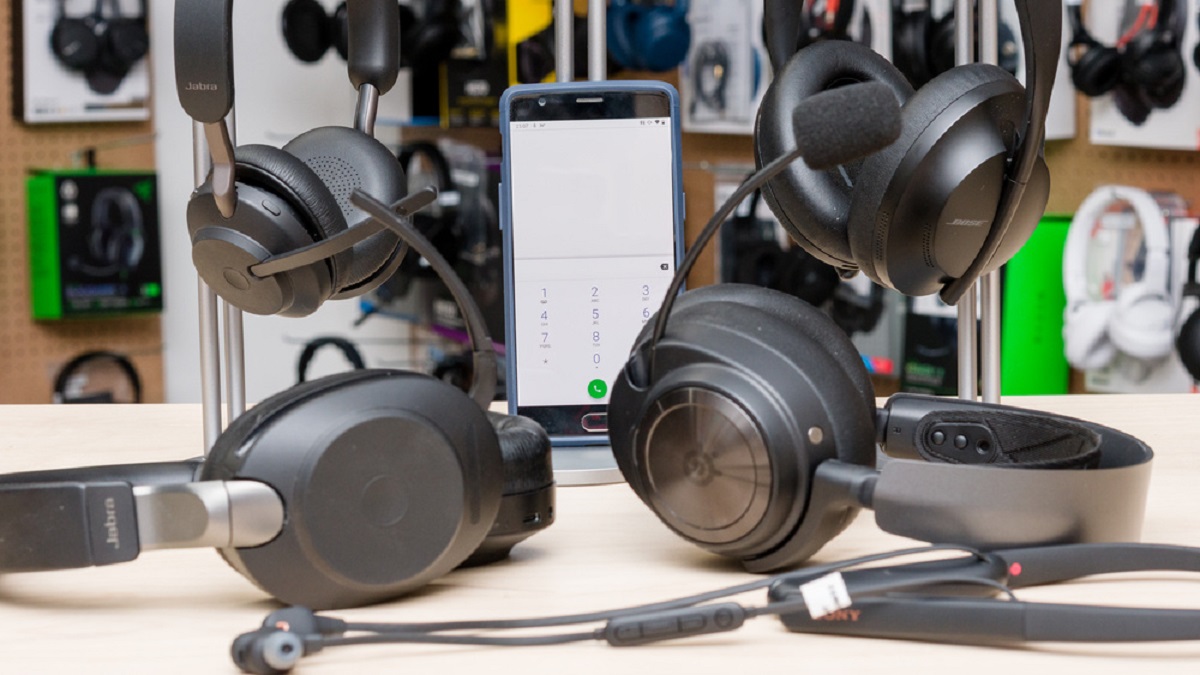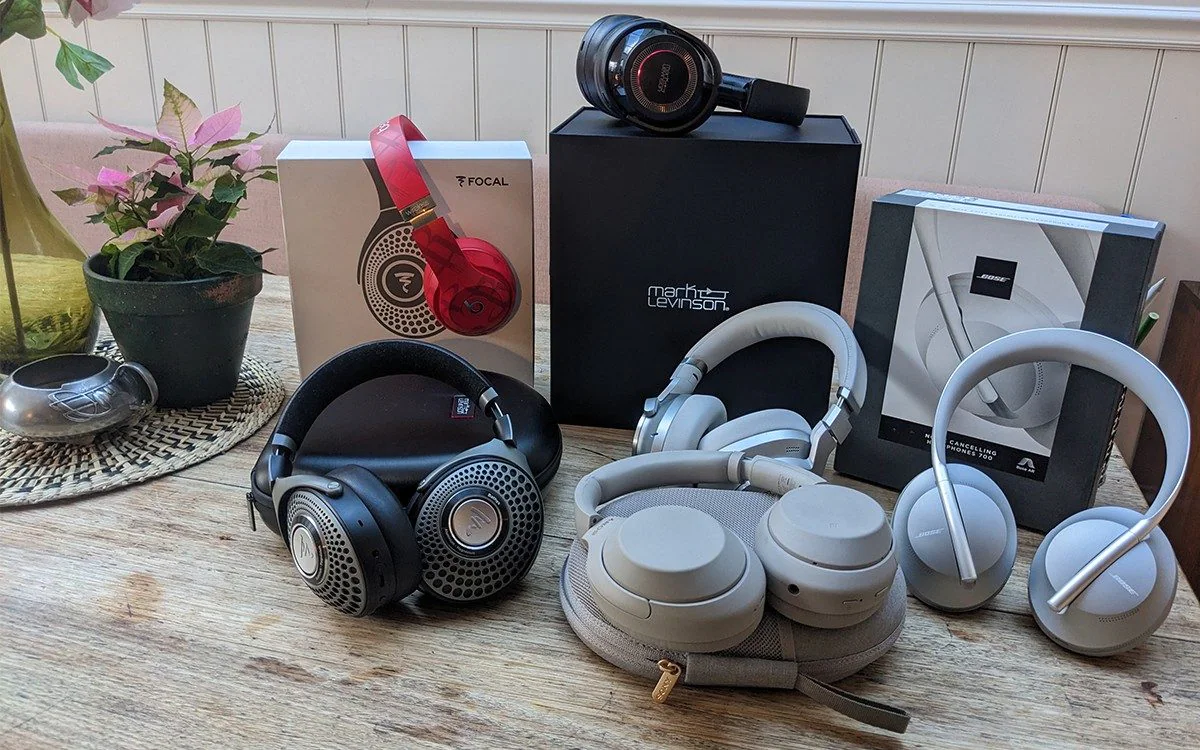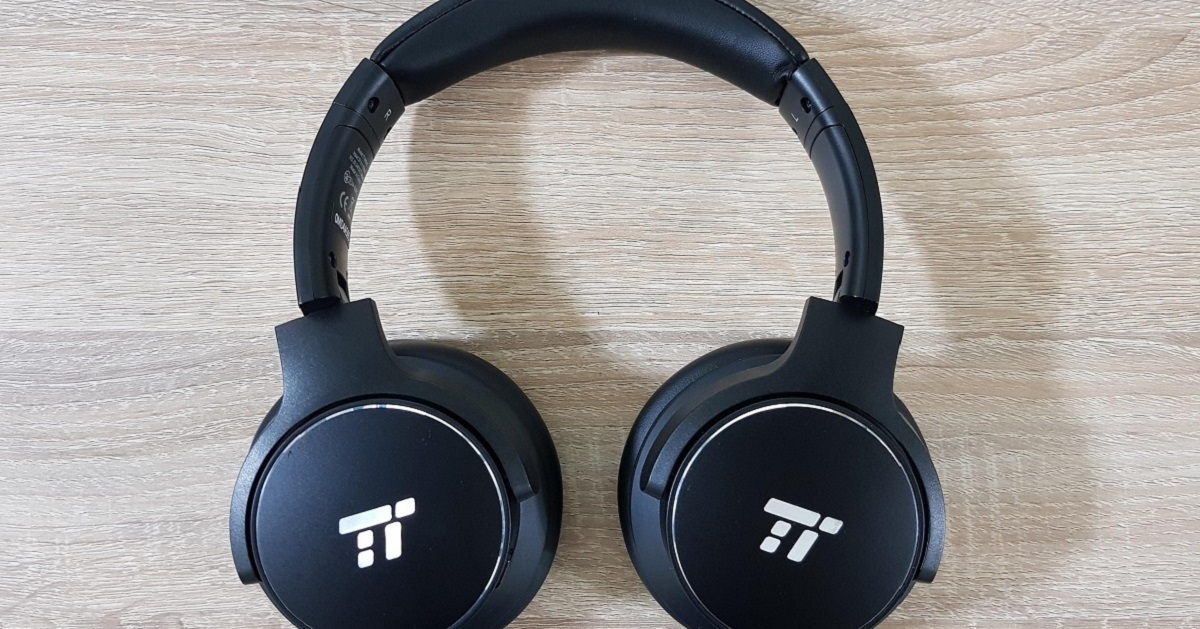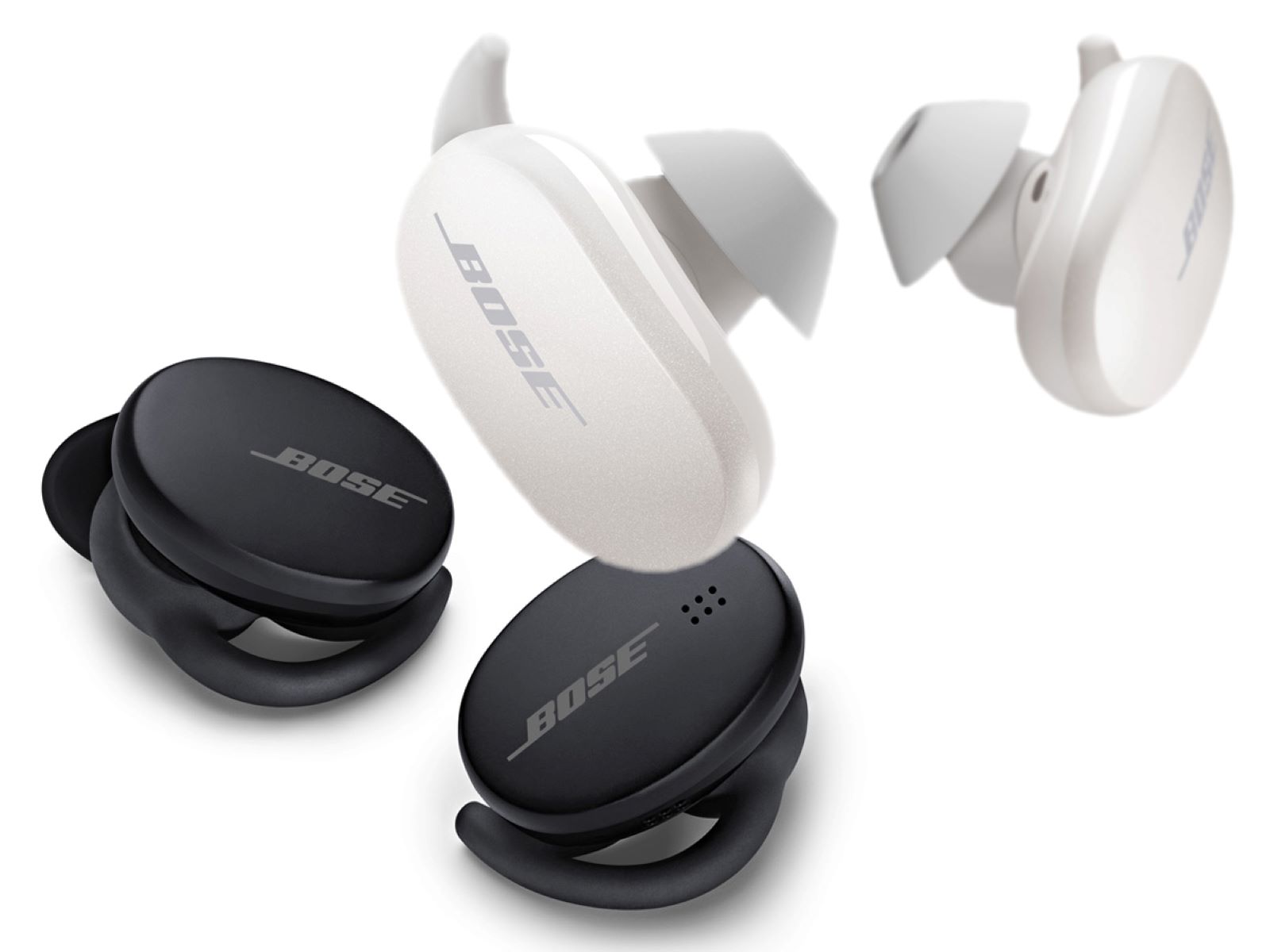Introduction
Imagine being able to enjoy crisp and clear audio without any distractions, no matter where you are. Whether you’re on a crowded subway, working in a bustling coffee shop, or flying on a noisy plane, the ability to escape the surrounding cacophony and immerse yourself in your favorite music or podcasts is truly a game-changer. This is where active noise cancellation technology comes into play.
Active noise cancellation, or ANC, is a groundbreaking technology that has revolutionized the way we experience audio. It works by using advanced algorithms and microphones to analyze ambient sound and then generate an “anti-noise” signal that cancels out the unwanted noise. By effectively reducing or even eliminating external disturbances, ANC enables us to enjoy audio in a whole new way.
However, as effective as traditional ANC can be, it does have its limitations. One of the challenges it faces is that it’s most efficient at canceling out constant, low-frequency sounds like engine rumbles or the hum of an air conditioning unit. When it comes to higher frequency noises or sudden, transient sounds, ANC may not be as effective.
That’s where hybrid active noise cancellation comes in. Hybrid ANC takes the technology a step further by combining the benefits of active noise cancellation and passive noise isolation, creating an even more immersive and noise-free listening experience.
In this article, we will delve into the workings of hybrid active noise cancellation, explore its benefits, and discuss its limitations. By the end, you’ll have a better understanding of how this technology enhances audio and how it can improve your everyday listening experiences.
What is Active Noise Cancellation?
Active Noise Cancellation, commonly referred to as ANC, is a technology designed to reduce or eliminate unwanted ambient noise to enhance the audio listening experience. It works by using microphones to capture the sounds around you and then generating an opposite sound wave to cancel out the noise.
The key to active noise cancellation lies in its ability to analyze the sound waves and detect their frequency and amplitude. By accurately measuring these aspects, ANC can generate an anti-noise signal that is precisely out of phase with the original sound wave, effectively canceling it out.
ANC is most effective in reducing low-frequency sounds like the rumble of an airplane engine or the hum of a refrigerator. These constant and predictable sounds can be targeted easily, allowing ANC headphones or earbuds to create a more peaceful and immersive audio experience.
To achieve active noise cancellation, headphones or earbuds are equipped with multiple microphones. These microphones capture the surrounding sound waves, which are then analyzed and processed in real-time by the ANC system. The anti-noise signal is then generated and mixed with the audio playback so that the user hears the desired audio with reduced background noise.
Active noise cancellation is not just limited to audio playback devices. It is also employed in various other applications such as noise-canceling headphones for call centers, vehicles, and even buildings where a calm, quiet environment is desired.
While ANC technology has significantly advanced in recent years, it is important to note that it cannot completely eliminate all sounds. Sudden or sharp noises, such as a door slamming or a loud conversation nearby, may still be audible, albeit at a reduced level. Additionally, ANC works best for continuous, low-frequency sounds, and may not provide the same level of noise reduction for higher-frequency sounds.
Now that we have an understanding of active noise cancellation, let’s explore how hybrid active noise cancellation takes this technology to the next level.
Utilizing Multiple Microphones
One of the crucial components of active noise cancellation technology is the use of multiple microphones strategically placed in headphones or earbuds. These microphones play a vital role in capturing the ambient sounds and analyzing them to generate the anti-noise signal.
The placement of the microphones is carefully designed to provide an accurate representation of the surrounding sound environment. Typically, there are microphones placed both on the outside of the headphones or earbuds to capture the ambient noise and on the inner side to detect the sound reaching the listener’s ears.
The microphones on the outer side of the headphones work to capture the external noise. They collect the sound signals and send them to the ANC system for processing. By analyzing the frequency and amplitude of these sounds, the ANC system can generate an appropriate anti-noise signal that counteracts the ambient noise.
On the other hand, the microphones placed on the inner side of the headphones serve a different purpose. They are responsible for detecting the sound reaching the listener’s ears. This enables the ANC system to measure the effectiveness of the noise cancellation and make adjustments if needed. By continuously monitoring the sound reaching the user’s ears, the system can ensure optimal noise reduction at all times.
The use of multiple microphones provides several advantages in active noise cancellation technology. Firstly, it allows for more accurate sound detection and analysis, leading to improved noise cancellation performance. By capturing sounds from various angles and distances, the microphones provide comprehensive coverage of the ambient noise.
Secondly, the use of multiple microphones enables the ANC system to distinguish between different types of sounds. It can differentiate between the desired audio signals and unwanted background noise. This capability allows the system to prioritize canceling out the noise while preserving the clarity and integrity of the audio being played.
Lastly, the use of multiple microphones helps in creating a personalized noise cancellation experience. The system can adapt and adjust the noise cancellation levels based on the individual user’s preferences and the specific environment. This customization ensures that the user can enjoy an immersive audio experience without compromising on comfort.
In the next section, we will explore how passive noise isolation complements active noise cancellation in hybrid ANC technology.
Passive Noise Isolation
While active noise cancellation technology is highly effective in reducing ambient noise, it is often supplemented with passive noise isolation to further enhance the audio experience. Passive noise isolation refers to the physical design and materials used in headphones or earbuds to block and reduce outside noise.
The concept of passive noise isolation revolves around creating a physical barrier between the listener’s ears and the surrounding environment. This is achieved through the design of the ear cups or ear tips, which aim to create a tight seal and effectively block out external sounds.
Headphones with over-ear designs use cushioned ear cups that completely cover the ears, forming a seal that minimizes sound leakage. The padding not only provides comfort but also acts as a physical barrier to block external noise from entering the ear. This reduces the overall ambient noise that reaches the listener’s ears.
Earbuds, on the other hand, come with different sizes and types of ear tips to ensure a proper fit in the ear canal. The right fit creates a seal that blocks external noise from entering the ear. The materials used for the ear tips, such as memory foam or silicone, provide additional sound isolation by absorbing and reducing external sounds.
Passive noise isolation is effective in reducing higher-frequency sounds and sudden noises that active noise cancellation may not tackle as efficiently. This is because the physical barrier created by the design of the headphones or earbuds can block out a wide range of frequencies without the need for additional technology.
By incorporating both active noise cancellation and passive noise isolation technologies, hybrid ANC provides a comprehensive and immersive audio experience. The combination of these two approaches allows for more effective noise reduction across a broad spectrum of sounds, ensuring that listeners can enjoy their audio content without disturbance.
In the next section, we will explore how hybrid active noise cancellation combines active and passive noise reduction methods to further enhance the audio listening experience.
Hybrid Active Noise Cancellation
Hybrid Active Noise Cancellation (ANC) is an advanced technology that combines the benefits of both active noise cancellation and passive noise isolation. By integrating these two approaches, hybrid ANC offers an enhanced and more comprehensive noise reduction experience.
While active noise cancellation technology excels at reducing lower-frequency noises, it may struggle with higher-frequency sounds and sudden transient noises. Passive noise isolation, on the other hand, is effective at blocking a broader range of frequencies but may not provide the same level of noise reduction as active cancellation.
With hybrid ANC, the combination of these two techniques results in a more efficient and effective noise reduction system. By utilizing both active noise cancellation and passive noise isolation, hybrid ANC can tackle a wider range of ambient noises and create an optimal environment for audio enjoyment.
Active noise cancellation actively generates anti-noise signals to cancel out unwanted sounds, while passive noise isolation physically blocks out external noise through the design and materials of the headphones or earbuds. The combination of these approaches allows users to experience audio with minimal disturbance from their surroundings.
Hybrid ANC is particularly beneficial in environments with varying noise levels or when dealing with different types of sounds. It provides a versatile solution that adapts to the ever-changing acoustic landscape, ensuring that users can enjoy their audio content with minimal distractions.
In addition to its noise reduction capabilities, hybrid ANC also improves the overall audio quality. By reducing background noise, the system enhances the clarity and detail of the audio playback, allowing users to fully immerse themselves in their favorite music or podcasts.
Furthermore, hybrid ANC offers the flexibility to adjust the noise cancellation levels based on personal preferences. Some users may prefer to have some ambient noise to remain aware of their surroundings, while others may prefer complete isolation. Hybrid ANC allows for customization, catering to individual needs and preferences.
As technology continues to advance, hybrid ANC is becoming increasingly common in headphones, earbuds, and other audio devices. It has revolutionized the way we experience audio in various settings, providing a seamless and immersive listening experience regardless of the surrounding noise.
In the next section, we will explore how hybrid active noise cancellation works and the technologies involved in its functioning.
How Does Hybrid Active Noise Cancellation Work?
Hybrid Active Noise Cancellation (ANC) combines active noise cancellation and passive noise isolation to deliver an immersive audio experience. Understanding how hybrid ANC works requires knowledge of the technology and processes involved.
At its core, hybrid ANC utilizes multiple microphones and advanced algorithms to analyze and cancel out unwanted noise. Let’s break down the process step by step:
- Microphone Placement: Hybrid ANC headphones or earbuds have several microphones strategically placed on both the outer and inner sides. The outer microphones capture the ambient noise, while the inner microphones detect the sound reaching the listener’s ears.
- Ambient Sound Analysis: The outer microphones capture the surrounding sounds, which are then sent to the ANC system for analysis. The system utilizes advanced algorithms to analyze the frequency, amplitude, and other characteristics of the ambient noise.
- Anti-Noise Generation: Based on the analysis, the ANC system generates an “anti-noise” signal that is precisely out of phase with the detected sound waves. This anti-noise signal is designed to cancel out the ambient noise, reducing its impact on the listener’s audio experience.
- Combination of Audio and Anti-Noise: The audio playback and the generated anti-noise signal are combined to provide the listener with a seamless audio experience. The anti-noise signal is mixed with the desired audio, effectively canceling out the ambient noise and allowing the user to enjoy clear and uninterrupted sound.
Passive noise isolation complements these processes by physically blocking external noise. The design of the headphones or earbuds, including cushioned ear cups or well-fitting ear tips, plays a crucial role in creating a tight seal that minimizes sound leakage and reduces ambient noise.
The integration of active noise cancellation and passive noise isolation in hybrid ANC ensures that users can enjoy superior noise reduction across a wide range of frequencies and sound environments. By combining these approaches, hybrid ANC creates an audio experience that is both immersive and tailored to the user’s preferences.
It is worth noting that hybrid ANC systems may offer users the ability to adjust the noise cancellation levels. This customization allows users to strike a balance between complete noise isolation and awareness of their surroundings, depending on their needs and preferences.
With advancements in technology, hybrid ANC continues to improve, offering even more effective noise reduction and audio enhancement capabilities. This technology is transforming the way we listen to audio, providing a more enjoyable and immersive experience in any environment.
In the next section, we will discuss the benefits that hybrid active noise cancellation offers to users.
Benefits of Hybrid Active Noise Cancellation
Hybrid Active Noise Cancellation (ANC) offers several significant benefits to users, enhancing their audio listening experience in various environments. Let’s explore the advantages of hybrid ANC:
- Enhanced Noise Reduction: Hybrid ANC combines active noise cancellation and passive noise isolation to provide superior noise reduction. It effectively cancels out a wide range of ambient noises, allowing users to immerse themselves in their audio content without distractions.
- Improved Audio Quality: By reducing background noise, hybrid ANC enhances the clarity and detail of the audio playback. Users can enjoy their music, podcasts, or movies with enhanced audio quality and a greater sense of immersion.
- Customizable Noise Cancellation Levels: Hybrid ANC often offers users the flexibility to adjust the noise cancellation levels according to their preferences. Some may want to completely block out external noise, while others may prefer a more ambient sound experience. The ability to customize the noise cancellation levels ensures a personalized and comfortable listening experience.
- Versatility in Different Environments: Hybrid ANC is effective in various settings, whether it’s a noisy office, a crowded subway, or an airplane cabin. It adapts to different noise levels and environments, allowing users to enjoy audio content without being affected by external disturbances.
- Preserves Audio Integrity: Thanks to the integration of passive noise isolation, hybrid ANC preserves the integrity of the audio being played. It minimizes the need for users to increase the volume to compensate for external noise, reducing the risk of hearing damage while maintaining a clear and consistent audio experience.
- Increased Focus and Productivity: With noise distractions minimized, hybrid ANC can improve concentration levels, making it beneficial for those working in noisy environments or studying. The ability to focus without disturbances can lead to increased productivity and better performance.
- Travel-Friendly: For frequent travelers, hybrid ANC is a valuable companion. It helps eliminate the monotony of long flights or train rides by creating a serene environment for entertainment and relaxation.
Hybrid ANC has truly transformed the way we experience audio by delivering a seamless blend of noise cancellation and audio enhancement. As technology advances, hybrid ANC systems continue to improve, offering even more sophisticated features and enhanced performance.
Now that we have explored the benefits of hybrid active noise cancellation, let’s discuss some of the limitations that users should be aware of.
Limitations of Hybrid Active Noise Cancellation
While hybrid active noise cancellation (ANC) offers numerous benefits, it’s important to recognize its limitations. Understanding these limitations can help users make informed decisions about their audio devices and manage their expectations. Let’s explore some of the limitations of hybrid ANC:
- High-Frequency Noise Reduction: Hybrid ANC may not be as effective in reducing higher-frequency sounds as it is in canceling out low-frequency noises. Sudden or sharp noises with high-frequency components might still be audible to some extent.
- Sound Leakage: Hybrid ANC aims to create a tight seal to prevent sound leakage, but some sound may still leak out or be heard by others, particularly at higher volumes. This is more noticeable in on-ear or open-back headphone designs.
- Battery Dependence: Hybrid ANC is typically powered by batteries or built-in rechargeable batteries. These devices require power to operate the ANC features, so users need to consider battery life and ensure they have sufficient charge for extended periods of use.
- Cost: The integration of active and passive noise cancellation technologies makes hybrid ANC headphones or earbuds more complex and expensive compared to regular audio devices. It’s important to consider the cost-effectiveness and budgetary constraints when purchasing hybrid ANC products.
- Fit and Comfort: The proper fit and comfort of hybrid ANC devices are essential for optimal noise cancellation and overall user experience. Ill-fitting headphones or earbuds may compromise the noise reduction capabilities and cause discomfort during prolonged use.
- Environmental Awareness: Complete noise cancellation can isolate users from the surrounding environment, which might not be desirable in certain situations. Users who need to maintain awareness of their surroundings, such as cyclists or joggers, may prefer more ambient sound or choose to disable ANC altogether.
- Limited Performance for Complex Noise: Hybrid ANC may struggle with canceling out complex simultaneous noise patterns, such as overlapping conversations or multiple sources of noise. In such cases, the ANC system may not be as effective in providing optimal noise reduction.
While these limitations exist, it’s important to note that hybrid ANC technology continues to evolve and improve with advancements in engineering and innovation. As manufacturers continue to refine their designs and algorithms, these limitations may be mitigated in future iterations of hybrid ANC devices.
Now that we’ve discussed the limitations, let’s conclude this article by summarizing the key points and highlighting the benefits of hybrid active noise cancellation.
Conclusion
Hybrid Active Noise Cancellation (ANC) brings together the benefits of active noise cancellation and passive noise isolation to create an immersive and tailored audio experience. By combining advanced algorithms, multiple microphones, and physical design elements, hybrid ANC devices offer users a range of advantages.
With hybrid ANC, users can enjoy enhanced noise reduction across a wide range of frequencies and sound environments. This technology allows for improved audio quality, increased focus, and customizable noise cancellation levels. It is versatile, making it suitable for various settings such as offices, travel, or leisure.
However, it is important to be aware of the limitations of hybrid ANC. Higher-frequency noise reduction, potential sound leakage, battery dependence, and cost should all be considered when choosing hybrid ANC devices. Fit and comfort are also crucial factors to optimize noise cancellation and user experience.
Despite these limitations, hybrid ANC technology continues to evolve, addressing these concerns and pushing the boundaries of audio innovation. As this technology advances, we can expect even more sophisticated hybrid ANC devices with improved noise cancellation capabilities, longer battery life, and enhanced user comfort.
Whether you’re a frequent traveler, a busy professional, or an avid music lover, hybrid active noise cancellation can truly transform your audio experience. By minimizing distractions and maximizing audio quality, it allows you to enjoy your favorite content with more clarity, immersion, and convenience.
So, the next time you’re looking for a new audio device, consider the benefits and limitations of hybrid ANC. Choose a device that suits your needs, preferences, and budget, and immerse yourself in a new world of auditory bliss.







